Galleries
Why Do Artists Love the Dealer Charles Moffett So Much? For Starters, ‘He Keeps His Word.’ (Also, He Offers Healthcare)
As the gallery celebrates five years in business and expands, artists tell us what sets him apart.
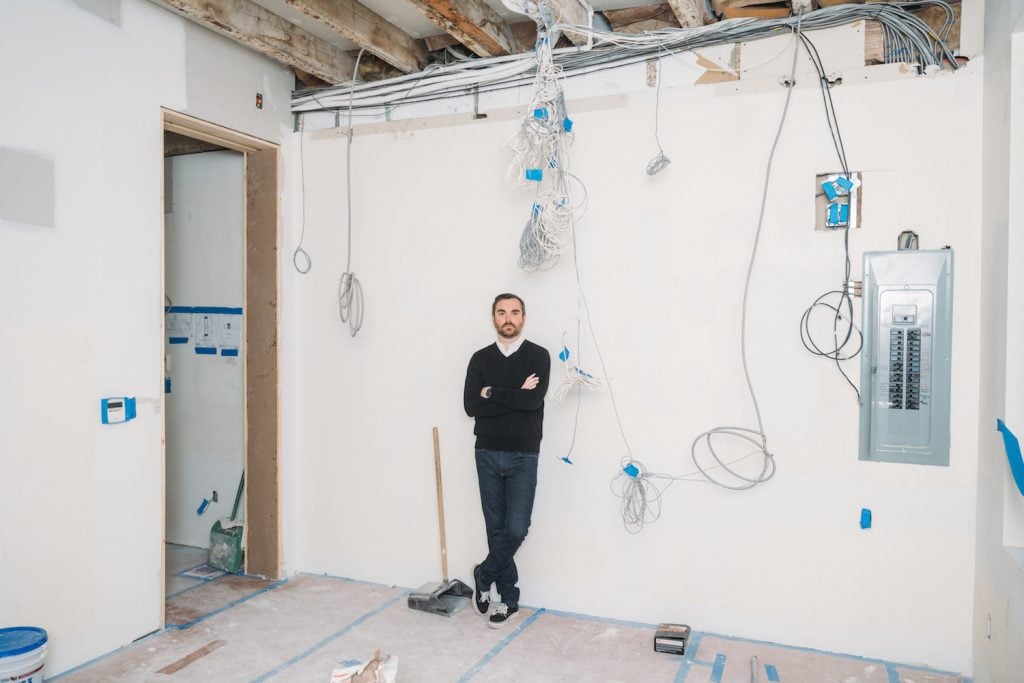
As the gallery celebrates five years in business and expands, artists tell us what sets him apart.

Eileen Kinsella

When Charles Moffett left his position as a contemporary art specialist at a major auction house to launch his own exhibition space, in 2018, he didn’t have a plan. Beyond a first presentation—a solo show of work by Lily Stockman, an artist known for her abstract paintings featuring biomorphic shapes and for her eye-catching palette—there was no script. Moffett had included her in his thesis show about a decade earlier.
“I honestly had no idea really what I was doing, and whether or not I was going to be any good at operating a space, running a business, or working with artists in this capacity,” Moffett told Artnet News in a recent interview.
The space was on the third floor of a building between Broadway and Lafayette in the East Village. Things went well enough that after two years, he decided to move to a slightly bigger space further west, on Canal Street. “I got a little more ambitious with the size and scale of the shows,” he said. Then, when the pandemic hit, he faced a moment of truth.
Moffett mulled going back to work at an auction house or at another gallery, wondering if keeping the space was sustainable.
Instead, he decided to double down. He reached out to a core group of artists whose work he loved and who he knew he wanted to work with, a roster that included Stockman, Alec Egan, Sam Bornstein, Maggie Ellis, and Kenny Rivero. “I asked them if they were interested in being represented by the gallery,” Moffett said, and they opted to formalize the relationship.
After two more years on Canal Street, Moffett recently moved to a storefront space at 431 Washington Street on the Western edge of Tribeca. The neighborhood has become a mecca in recent years for galleries launching new outposts.
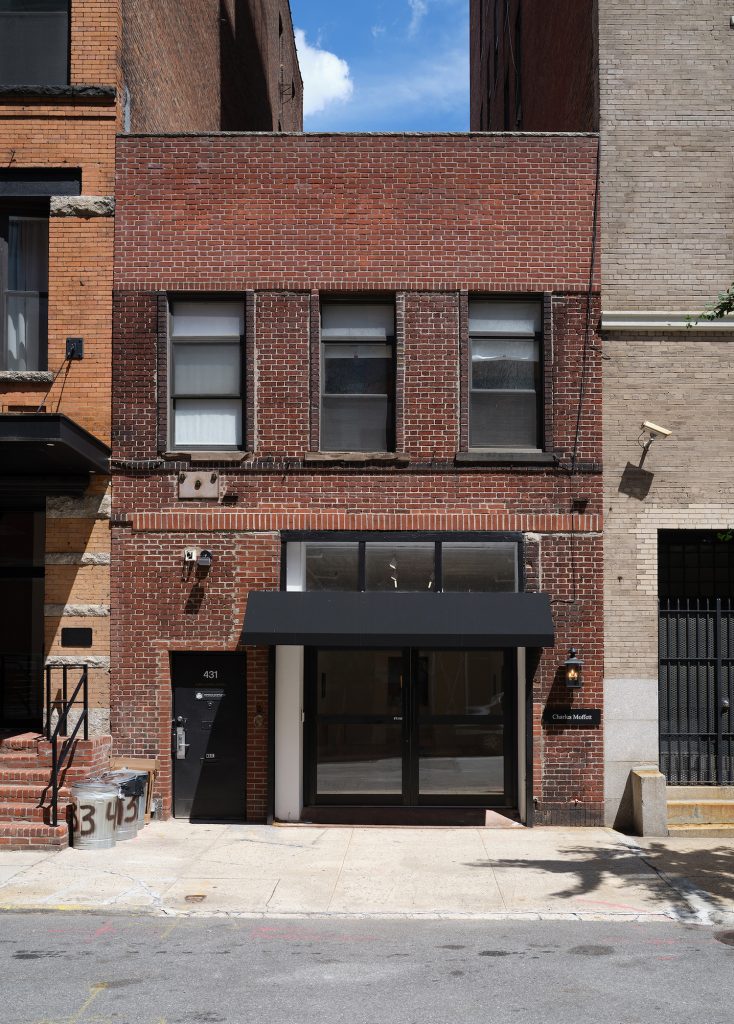
The facade of Charles Moffett Gallery at 431 Washington Street in Tribeca.
Image courtesy Charles Moffett.
Now, roughly five years in, with the gallery garnering a reputation for buzzy art fair booths and exhibitions, Moffett is embarking on something of a mini expansion by taking over an adjacent second-floor space a few doors down, at 437 Washington Street, which is conveniently owned by the same landlord as the storefront façade.
If Moffett is embracing the “grow or go” strategy oft-cited by dealers and art world denizens, he’s doing so on his own terms and with his typically thoughtful approach. “Rather than taking on a slightly bigger space, I tried to stick with something that was a bit more in our comfort zone from a financial perspective,” he said. “So here we are expanding once again.”
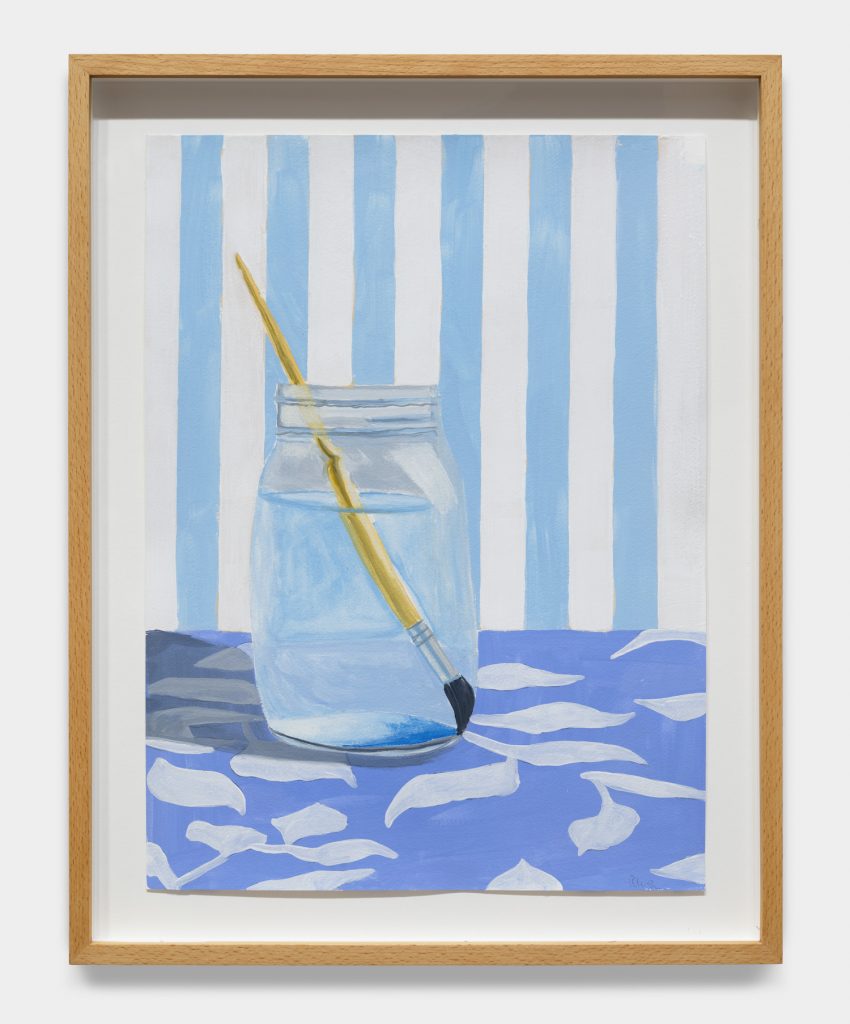
Alec Egan, Brush in Water (2023). Photo by Daniel Greer. Courtesy Charles Moffett.
The second location will span approximately 1,500 square feet, including an 800-square-foot exhibition space dedicated to extended, focused artist presentations, as well as a private viewing room, art storage, and offices for the growing gallery team. After a few short months of intense overhaul—Artnet News got a pre-renovation walkthrough in March—the space will open this Thursday (May 11) with a solo show by Egan, the artist’s third with the gallery. It features ten watercolors and a smaller selection of oil paintings.
When Egan and Moffett met at a dinner in 2018, the dealer was already familiar with his work, which he’d seen at EXPO Chicago and NADA. “It sounds corny, but the integrity that came across in that initial meeting, and his curiosity. I said ‘yeah, I’ll work with you. I made a commitment on the spot,’” Egan told Artnet News in a phone interview.
Egan praised the dealer for his willingness to experiment, saying Moffett “helped push and enable parts of my practice that I was reluctant to get into. He wants to be your partner in whatever you’re exploring in your studio.”
Noting that watercolors mark something of a departure in his practice, Egan said: “It’s this type of thing where most galleries would be like ‘No, we want this on canvas.’ I put the idea past Charlie and he immediately said: ‘I think you should do it.’”
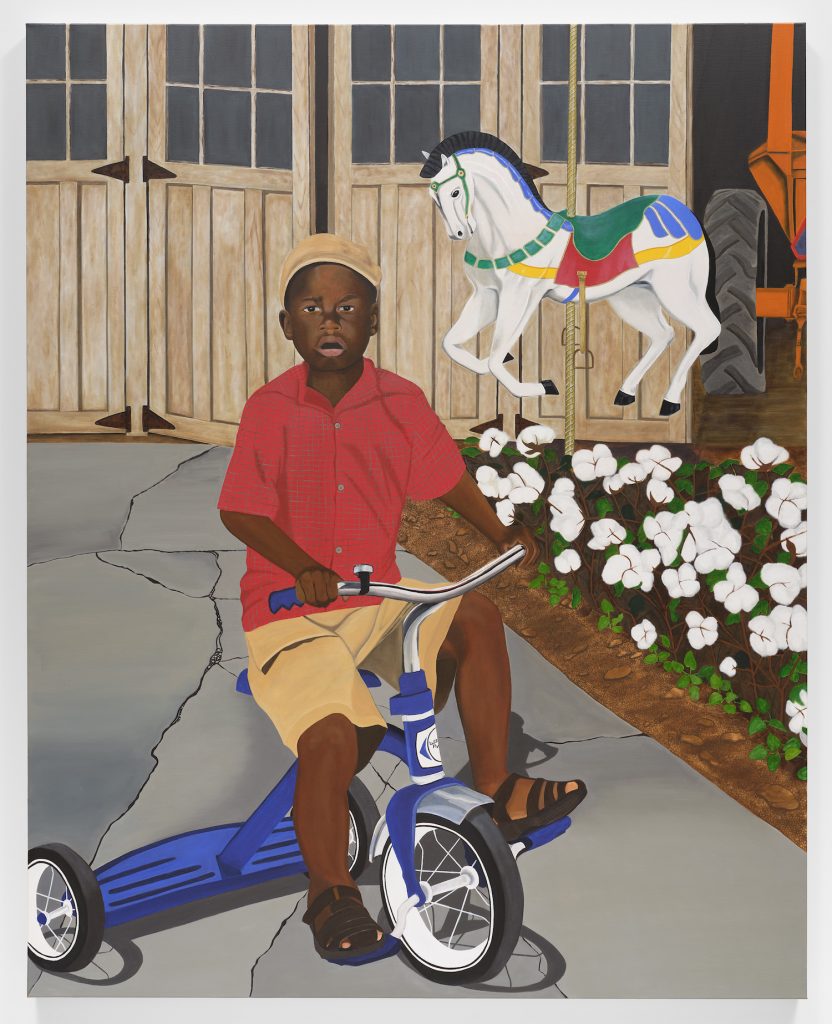
Keith Jackson, I Got My Own (2022). Collection of the Farnsworth Art Museum, Rockland, Maine. Museum purchase, Lynne Drexler Acquisition Fund 2022. Image courtesy Charles Moffett Gallery.
Another new addition to the gallery roster is Keith Jackson, a Kenosha, Wisconsin-based painter and former contractor in his mid-50s who only recently started showing with art galleries. Moffett gave him a solo show at the 2022 Armory Show in New York and the booth sold out, including two paintings that were placed with the Farnsworth Museum in Rockland, Maine.
Jackson’s paintings capture seemingly ordinary yet profound memories of his childhood, including numerous depictions of his nine siblings. He will have his first solo show with the gallery in 2024.
The artist met Moffett last year as he was talking to various galleries. “One thing that stands out: He’s the only one that came to Kenosha to see me and do a studio visit,” Jackson told Artnet News in a phone interview. He praised the dealer not only for his success in placing the Armory Show paintings in “good homes,” but also in general for being a straight shooter in all aspects of business aspects—a comfort to an artist who only recently became immersed in the sometimes cut-throat art world.
“He keeps his word,” Jackson said. Whether it was the exact time Moffett was going to meet the artist at the Armory on VIP day, or the timing of the museum acquisitions, or when payment is coming, “there’s no runaround.”
Another atypical perk that the gallery offers to artists? The opportunity to have healthcare through the gallery. This work is their livelihood, says Moffett, and they should have proper health coverage. The gallery covers 50 percent of its artists’ premiums.
Moffett also chooses the artists he wants to work with carefully. He thinks of it like a track meet where each artist has “their own lane to run in,” he explained. “I never want anyone to feel as though someone is going to be swerving into their lane. I never want to have a roster where somebody says ‘oh that makes sense that that artist would be showing with Charles Moffett.'”
With the five-year anniversary of the gallery approaching, Moffett is planning a group show at NADA that will feature work from all ten artists in the stable, including Jackson, who was just added. His art fair booths, including recent showings at NADA Miami and Felix in Los Angeles, have created substantial buzz.
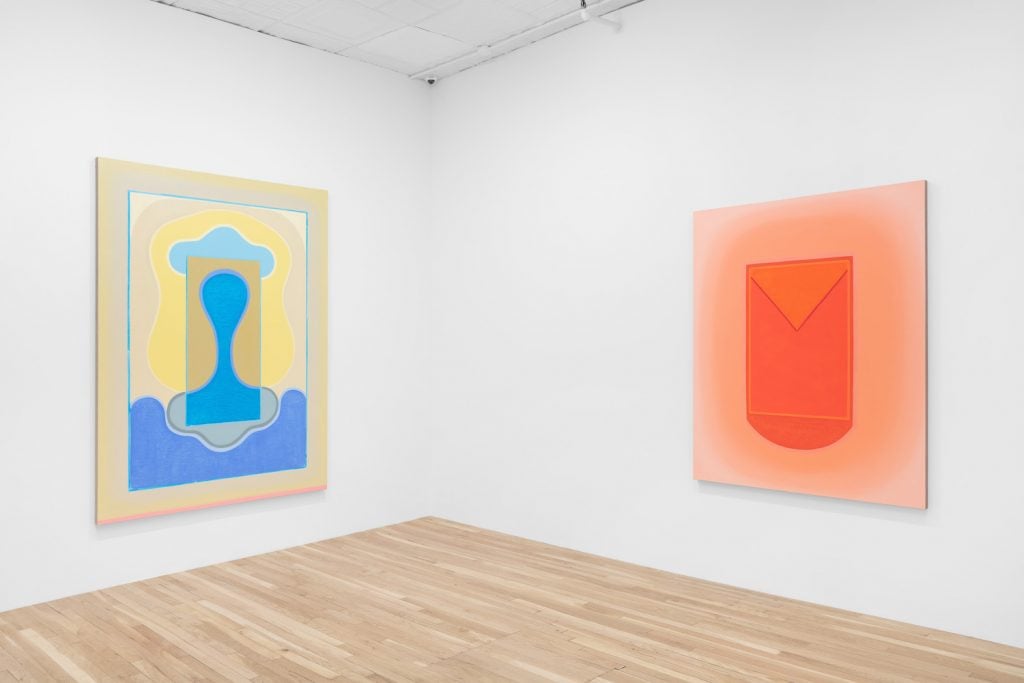
Installation view of “Lily Stockman: The Tilting Chair” at Charles Moffett Gallery in Fall 2022. Photo by Daniel Greer. Image courtesy Charles Moffett.
Moffett’s approach to fairs is a bit of an outlier, given that his is a relatively young gallery and there’s much grumbling about fair application and participation costs. But the trade-off is worth it in his view. “In the beginning I was not very eager to jump into the cycle of doing fairs because of the costs involved, but it’s an important part of expanding the visibility of artists,” he said.
Stockman is effusive about Moffett and his management style, calling him the “real deal.”
“It’s extremely rare to find a gallerist who lives for artists, has the art historical and academic chops to know what he’s talking about, and the keen market strategy to develop long and fruitful careers,” Stockman said. “Even in the very lean early years of the program, Charlie would rather hold off on a sale than sell to an opportunistic collector; no one is as scrupulous, nor as savvy.”
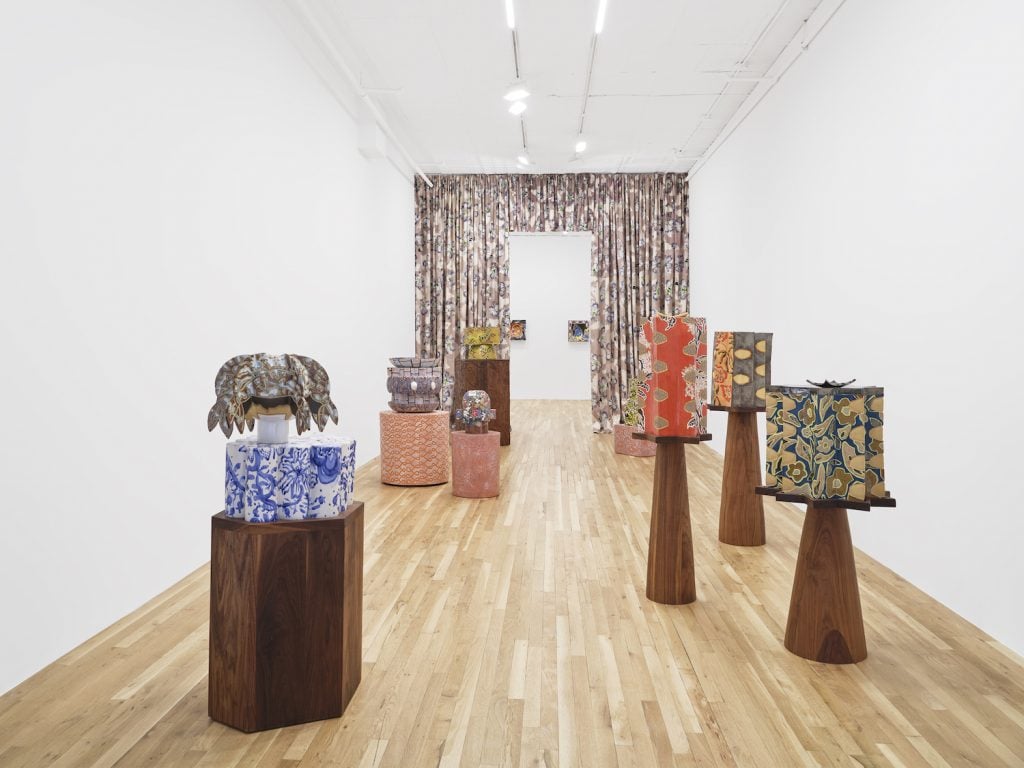
Installation view of “Bari Ziperstein: Set Patterns,” at Charles Moffett Gallery. Image courtesy Charles Moffett.
Moffett has helped Stockman realize the importance of tuning out art world and market “noise” in order to focus on making work, she said. He has also stressed the importance of the “long game” and holding on to some of one’s own work, even when demand outstrips supply.
Next up in the main space is a solo show by Kim Dacres, a first-generation American artist of Jamaican descent, which opens on May 20. The Harlem-based Dacres, who has her studio in the Bronx, uses rubber from recycled tires to make sculptures that celebrate major influences on her life.
When we asked Moffett what the philosophy and business practices that endear him to artists and set him apart from others are, he had a simple response: “Time and time again I speak with artists who have been waiting for payment or where they’re not getting paid one, two, three, six months, a year on. It amazes me that that’s even possible. I always told myself the day that I start paying artists late in order to fund the gallery’s ambitions is the day that I close down. I don’t think I’m necessarily reinventing the wheel.”
Stockman said she always jokes that the tagline for the gallery should be “No one pays faster.”